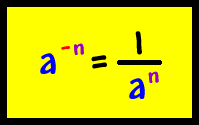Algebra, Done!
I just finished all of algebra!
The last thing I did in algebra was conic sections.
In conics we learned how to graph ellipses, hyperbolas, circles, and parabolas.
This a line:
y = x + 5
Parabola:
y = -3x2 – 6x – 1
Circle:
(x – 2)2 + (y + 3)2 = 9
Ellipse:
(x2/6) + (y2/16) = 1
Hyperbola:
x2 – y2 = 39
A parabola is U-shaped. But it can open up or down.
An ellipse is an oval.
Hyperbola is like two parabolas.
You can tell what shape an equation is just by looking at it.
If one variable either ,x or y, is squared it is a parabola.
If both variables are squared then the graph might be a circle, an ellipse, or a hyperbola.
If the coefficients of x2 and y2 are the same sign AND equal, the equation represents a circle.
If the coefficients of x2 and y2 are the same sign BUT different, you have an ellipse.
If the coefficients of x2 and y2 have different signs(one positive and one negative), then the graph will be a hyperbola.
I did this with my dad:
Now I’m exited to start calculus and advanced geometry.











